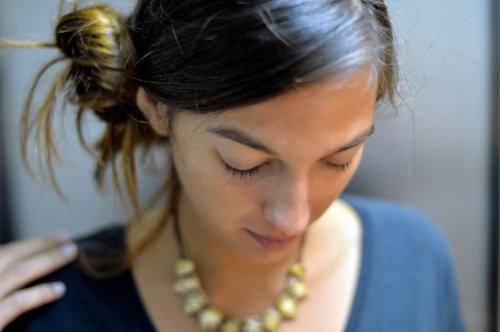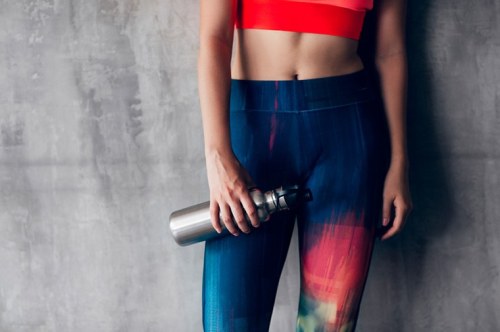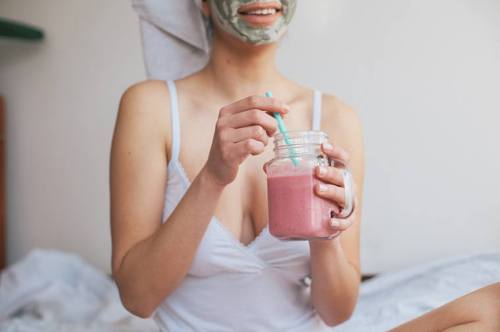Our editors independently select these products. Making a purchase through our links may earn Well+Good a commission
Silicon Valley is ground zero for birthing biohacking habits, AKA changing the environment around or inside of you so you have more control over your biology. No time to eat? That’s okay, you can live off Soylent. Want your coffee to give you energy and fill you up? Add some butter and MCT oil.
And it’s not just about food. Finding a way to sleep for five hours and still wake up refreshed, getting a killer workout in just 20 minutes, and perfecting a cocktail of supplements that might allow you to live an extra decade are all forms of biohacking. There’s only one problem: Most of the scientific testing for these tips are performed on men only, and face it, women’s brains and bodies just work differently.
“Women make the best biohackers because they are typically more in tune with their bodies.”
“Big picture, biohacking is the same for men as it is for women, but the individual tools are different because there are biological differences,” says Dave Asprey, the founder of Bulletproof who is known by many as the original biohacker. Asprey has been preaching the practice for the last decade, but recently, women in the science, tech, and medical communities have started speaking up with their own tips, tailored for the XX chromosomal set.
For the record, Asprey isn’t offended in the least. “Women make the best biohackers because they are typically more in tune with their bodies,” he says. “Women go through changes every month and naturally find ways to deal with things like cravings, low energy, and pain.”
Here, eight women leading the female biohacking movement share their top tips, discovered through intensive scientific research and testing.

Track your cycle
Entrepreneur and LifeStory Health founder Anna Villarreal is generating a lot of buzz in the medical and biohacking communities for her innovative approach to women’s healthcare: using menstrual blood to early detect and track diseases.
While she isn’t revealing all her findings just yet, she says menstrual blood is extremely instrumental in early detection for conditions women are prone to, like depression, cardiovascular diseases, and reproductive issues.
With this in mind, she strongly advises women to be aware of their cycle and what’s normal for their individual bodies. “Cycle trackers, like using an app or doing it manually, can be beneficial for reasons outside of the fertility space,” Villarreal says. “It’s also helpful for sports performance and insight into illnesses, too. During the luteal phase, women experience higher body temperature, which makes training more challenging. So knowing when you are in that phase of your menstrual cycle [hint: it comes right after ovulation, before your period] can clue you in on why your workout may be harder that particular day.”
Another interesting link: Certain phases can exacerbate migraine and asthmatic symptoms. And to think that until now, menstrual blood has been seen as medical waste.

Monitor your blood glucose levels
Molly Maloof, MD is the go-to physician for execs in Silicon Valley who are obsessed with reaching their peak performance. Her philosophy: What if a doctor decided to optimize health instead of just treating an illness? One major way she says to do this is by monitoring your blood glucose levels. Considering sugar is one of the greatest health threats, it shouldn’t come as too much of a surprise that it’s a top concern.
“A lot of women who have hormonal issues have blood sugar problems,” Dr. Maloof explains. “Many women have undiagnosed pre-diabetes and this can help them find out if they have normal blood sugar or not.”
But even if you aren’t at risk and just want to keep inflammation away, tracking your levels can help. Dr. Maloof uses a glucose monitor called Abbott Libre Pro herself and says it’s helped her cut down her sugar intake significantly. Her pro tip: Do it one to two hours after you eat and when you wake up.

Breathe your anxiety away
As the founder of Urban Wellness Clinic, top chiropractor Emily Kiberd, DC, sees women every day with myriad health problems and many are rooted in the same cause: anxiety, something women are more likely to experience than men. It’s why her top biohacking tip involves a way to take control: using breath to prime the parasympathetic system.
Here’s how to do it: “Take a [big] breath in, with 360 degree expansion into the belly. The exhale should be twice as long as the inhale. Try four counts in and eight counts out. This allows your diaphragm to be the most vertical possible, leading to decreased chest breathing, less rib flare, and reduced anxiety.”
This habit will help your body as well as your mind, according to Dr. Kiberd. “Most women suck in and skinny up their waistline, leading to pelvic floor issues, disc herniation, and core instability,” she says. “By breathing down into the belly and expanding circumferentially, you can avoid sway back and increase core stability, letting us move like when we were babies.” So stop sucking in—you can bet it’s not something men do too often.

Make hydration part of your warm-up—and cool down
Emily Splichal, DPM, podiatrist and Ashtanga yoga instructor, got the biohacking community talking when she started telling people to stop wearing shoes so they could better stimulate the nervous system. But her insight into human movement doesn’t stop with footwear: She knows how to hack your workout, too. “Drink watermelon water before you work out to increase oxygen to muscles and tart cherry juice after you work out to stimulate recovery,” she says.
She’s found that watermelon increases nitric oxide in the body, opening the blood vessels more. “The more blood to the muscles, the more oxygen, which means a better workout,” she says. And as for the tart cherry juice, its anti-inflammatory properties have been shown to increase muscle recovery. This is especially important because studies have shown that women have slower muscle fatigue than men, so they can endure longer, which in turn means a lengthier recovery is needed.

Use an OG smoothie staple to rejuvenate your skin
Inflammation often rears its ugly head in women as skin problems, something Dr. Tania Elliott, MD, the chief medical officer at EHE, sees all the time as a board-certified allergist and internist specializing in microbiology and immunology. The remedy she tells her patients doesn’t involve any tricky technology or even a prescription—it’s a yogurt face mask.
“A plain Greek yogurt with probiotics helps decrease inflammation and rejuvenate the skin,” she says. “It’s hydrating and especially good if you’re prone to acne.” Yet another thing women deal with more to men thanks to ever-present hormonal changes. Her tip is a good reminder that biohacking doesn’t have to be complicated.

Throw away your Spanx
It wouldn’t be a complete biohacking guide for women without a discussion about gut health. After all, women have more digestive problems than men. Marta Taylor, the founder of Living Limitlessly, a biohacking site for women, has one tip she wants every woman to know: loosen up—your clothes, that is.
“Generally speaking, wearing tight clothing is not conducive to making your gut happy,” she says. “It squeezes your body into a shape that it currently is not, compresses your internal organs, and stops your digestive track from functioning like it should.” Taylor says the compression can lead to heart burn, indigestion, and acid reflux—not fun.
Taylor’s Rx: Wear light and loose clothing when you eat. And as for waist trainers and Spanx? Toss ’em—they’re doing more harm than good.

Practice orgasmic meditation with your partner
Maybe your microbiome is all under control; it’s sex you want to hack. After hearing from countless women that they had trouble fully enjoying the experience because they get distracted by other thoughts, Slow Sex author Nicole Daedone developed orgasmic meditation to help. “You need to get out of your head and into your body,” she explains.
“OM is a 15-minute practice where your partner strokes your clitoris in a deliberate, non-reciprocal manner with no goal but to feel.” She compares it to setting aside 20 minutes for yoga or Transcendental Meditation: “You don’t wonder what’s going to happen or how long you’ll be lying there for. The structure is the same every time, so within it you can relax your mind and feel your body, stroke by stroke. It’s a training ground for connection; the ultimate body hack for quieting the vigilance center and accessing orgasm in a reliable way.”
It was only a matter of time before biohacking ventured into the bedroom—for reasons other than sleep.

Be your own experiment
Sleep, nootropics, and disease prevention expert Megan Klimen cuts to the core of biohacking with her tip. “Don’t guess, test!” she says. “When trying something new, think about why you’re making this change and set up an experiment to test if the change is effective.”
She uses testing out a nootropic supplement for increased concentration as an example: “To find out if it works, put an alarm on your phone to go off at random times during the work day and record if you are on or off task when it goes off. The best tests are ones that simple and that you will actually do.”
Bonus tip: Here’s how to biohack your DNA and slow aging. Plus, this is what the future of sleep looks like.
Sign Up for Our Daily Newsletter
Get all the latest in wellness, trends, food, fitness, beauty, and more delivered right to your inbox.
Got it, you've been added to our email list.











